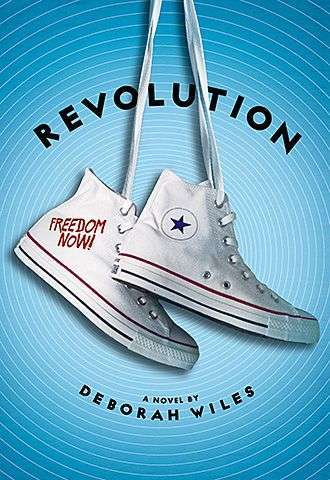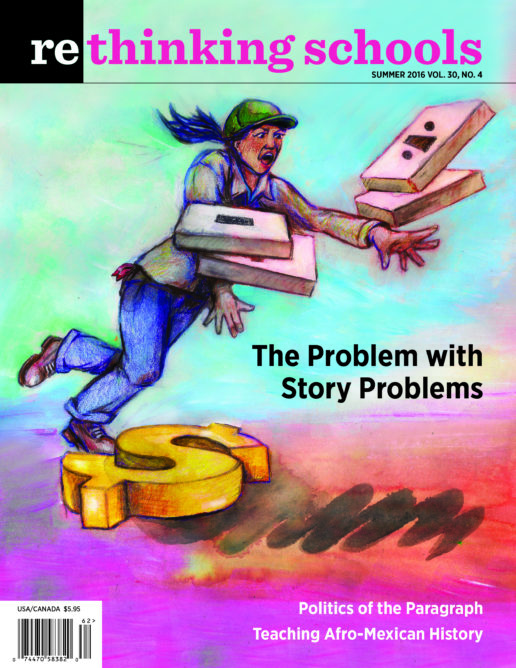Freedom Summer in Greenwood

By Deborah Wiles
(Scholastic Press, 2014)
In Revolution, 12-year-old Sunny Fairchild is dealing with troubling family issues—an absent mother, a new, pregnant stepmother, a stepbrother and stepsister. And then Northern “invaders” show up to register Black citizens to vote in her small hometown of Greenwood, Mississippi. It’s Freedom Summer—1964. Sunny, who is white, is curious enough to do some spying. Thus begins her awareness of the injustices of segregation.
Ray Bullis is a 14-year-old Black teenager in Greenwood whose anger and frustration at not being able to play on the baseball team or go to the movie theater in town spur him to activism. He and his friends create their own group, the FreedomMakers, and eventually join the college-age volunteers at the local Student Nonviolent Coordinating Committee (SNCC) headquarters. Sunny and Ray cross paths several times during Freedom Summer, and their stories twist together surprisingly.
Interspersed throughout this “documentary novel” are primary sources: photographs, maps, song lyrics, speech excerpts, newspaper clippings, Ku Klux Klan recruitment brochures, and other historic documents. In the audiobook version of Revolution, actors sing the songs and narrate the speeches, providing a moving soundtrack.
Wiles vividly describes the violent hatred the white population of Greenwood directed at SNCC and the Black people of Greenwood as they courageously tried to register to vote. She gives voice to the many people, Black and white, working to establish equality. Revolution exposes young readers to the politics of a state unwilling to change during the tumultuous months leading up to President Lyndon Johnson’s signing of the Voting Rights Act of 1965.
Revolution is not without its own bias, however. The story is grounded in the author’s childhood experiences as a white child in Mississippi. Although several chapters scattered through the book are in Ray’s voice, the central story is Sunny’s. Her eyes are eventually opened to the injustice around her, but the story feels like it was written with a white audience in mind.
As Debbie Reese, who writes the American Indians in Children’s Literature blog, points out, Black readers will need to get past the first few chapters to find themselves “humanized” in the novel. That is because Sunny, whose views undergo a dramatic shift over the course of the summer, starts off as prejudiced as the adults around her. That readers must go through that same process is problematic, especially in children’s literature.
There is no doubt that the publishing industry needs to print more books by and centered on nondominant voices (see We Need Diverse Books at weneeddiversebooks.org). That being said, Revolution is incredibly rich, with many kinds of teaching opportunities. Especially if the book is taught critically within a classroom setting, it offers a powerful reading and learning experience for upper elementary and middle school students.

